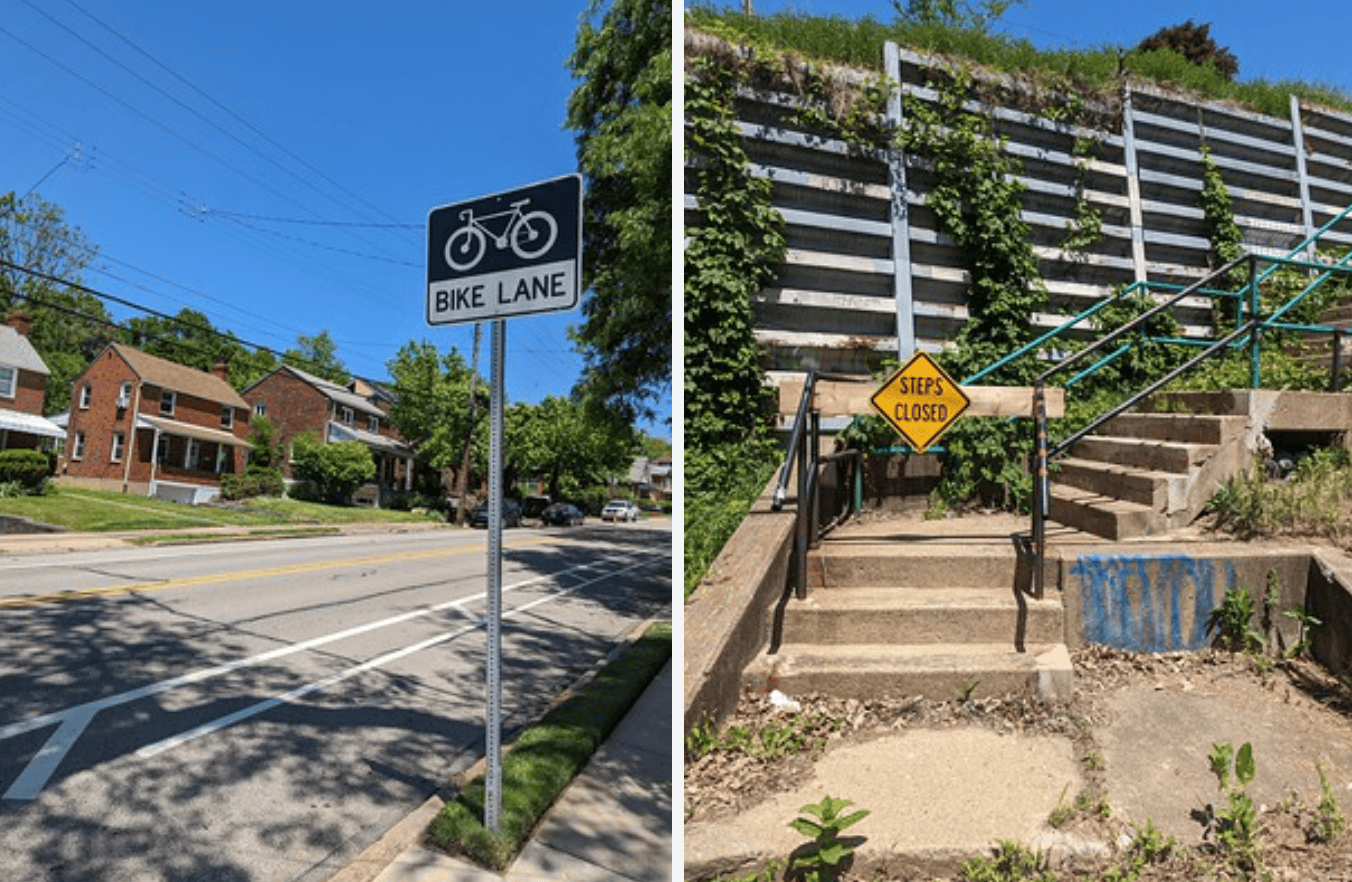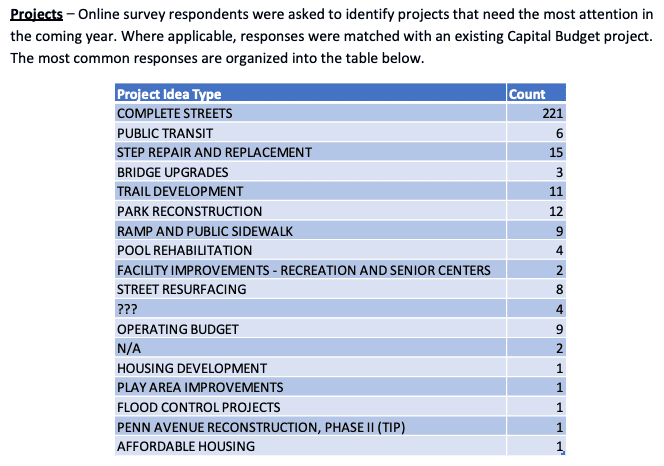
Get Familiar With The Capital Budget
One of the most reliable ways to make Pittsburgh better for biking and walking is to make sure that projects that improve biking and walking are included in the Capital Budget.
A Capital Budget is the way that a city’s mayor prioritizes and funds the things they want to see built. One can think of a Capital Budget as the conscience of a mayor. The things that they think are important are the things that get funded.
It’s our job as neighborhood advocates to help make the case for continuous and expanded funding for safety improvements on our streets. This year, it’s worth celebrating that we are definitely making a good impression that funding complete streets projects is important! Out of all the project ideas received by the Mayor’s Office, the most popular category by far was “Complete Streets” with 221 related requests, followed by 15 for “Step Repair and Replacement”.

Now that the capital budget draft is ready, the best way to advocate for ideas to turn into reality is to get familiar with what’s in the draft for next year’s budget. Then, make sure that the Mayor and your Councilperson hear your support for projects that make our streets safer for people who bike and walk.
The City will not be holding any public meetings regarding the draft budget for 2026, but residents may give feedback to their City Councilmembers.
Here are tips for finding the info you want
It’s a long document, so here are some tips for how to find information that’s specifically relevant to our advocacy for safer streets:
- First look at the 2026 Project Summary on Page 21. Skim the list for any projects that are in your neighborhood or in an area where you travel, and jump to the corresponding page for more information.
- Check out the list of projects within “Complete Streets” on page 43. This is a catch-all category for small to medium-sized street design/redesign projects, Vision Zero implementation, as well as the Neighborhood Traffic Calming program. The budget allocation for 2026 is significantly higher than for 2025, but that is largely because it includes funding to expand the POGOH bike share network that is coming from federal grants and not City tax dollars.
- Some other allocations to look at:
- Page 73: Ramp and Public Sidewalk — The allocation for 2026 is less than half 2025, which indicates the City will not be repairing as many broken sidewalks and ADA curb ramps. This is one area we need advocates to speak up about!
- So. Many. Bridges. — Our bridges need a lot of work, including new pavement and walkways. Keep an eye on these projects and look out for opportunities to get new bike lanes, intersections, and better walking infrastructure as part of these projects.
- Street Resurfacing — AKA paving, which typically involves repainting the lines and an opportunity to make changes to road markings that work better for people who bike and walk.
- Page 73: Ramp and Public Sidewalk — The allocation for 2026 is less than half 2025, which indicates the City will not be repairing as many broken sidewalks and ADA curb ramps. This is one area we need advocates to speak up about!
- Jump down to the tables in Appendix B on page 170. This is where you can see a list of all the projects that were proposed for the budget by members of Council and department officials. A panel of scorers rates each proposal against a set of criteria and makes a recommendation for inclusion in the draft budget. Zoom in to skim the list, and see what projects didn’t make the cut. Focus on items with “complete streets” in the left column.
- See our guide to Influencing the Capital Budget and the City’s Engage Page for more information on the Capital Budget process.
Remember, just because a project you care about isn’t in the draft budget for 2025 doesn’t mean it’s not happening. Many projects are included in the “Complete Streets” allocation even if they’re not directly mentioned. Some projects take years to complete and were already funded in previous budgets. For others, there’s still time for council members to make the case for a project to be included in the final budget.
That’s why it’s important to work together with your neighbors to advocate for the projects you care about! Get together with your local advocacy group to make an action plan and reach out to your councilperson to give feedback about what changes you’d like to see before they vote to approve the budget in December.
